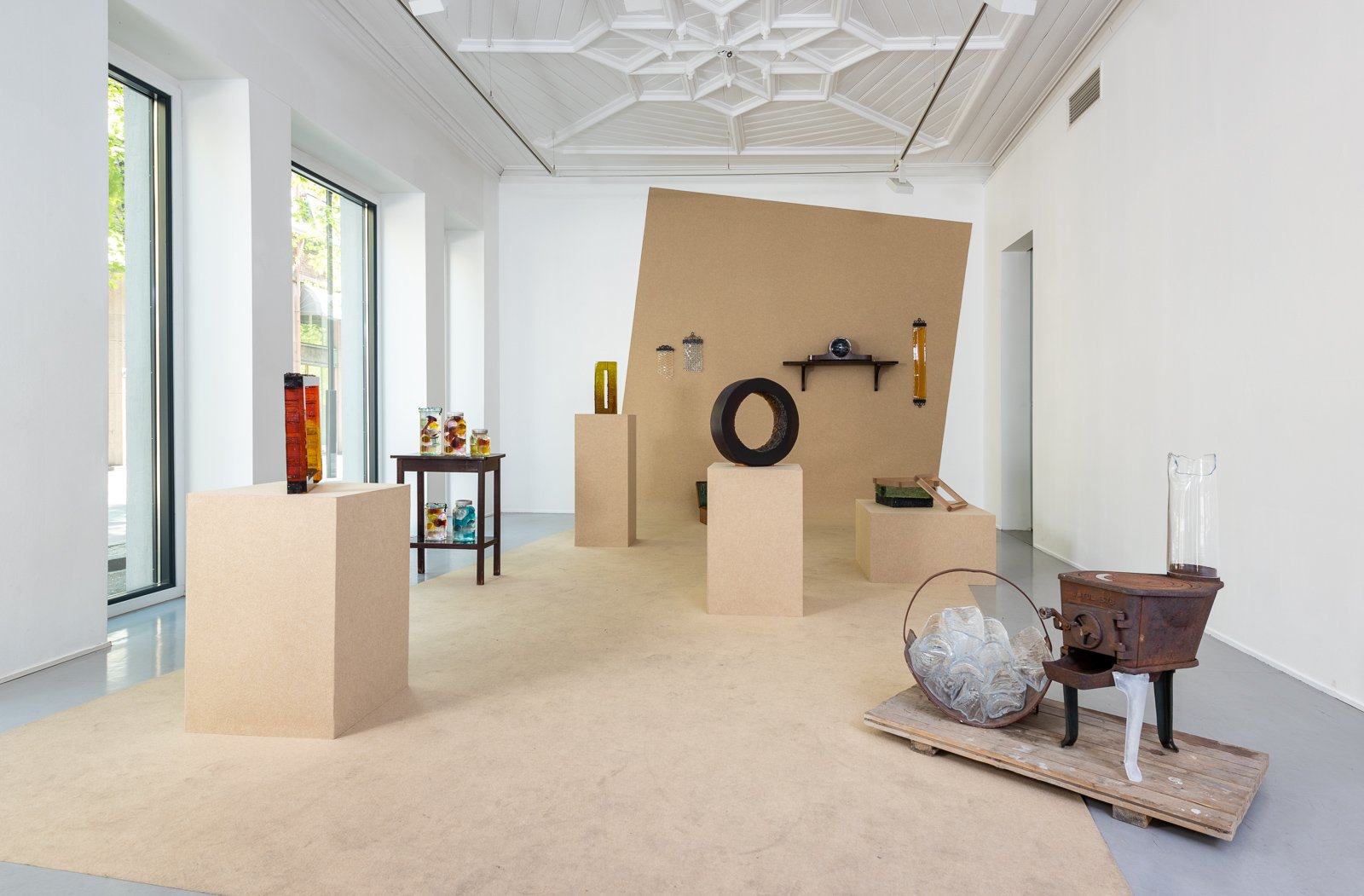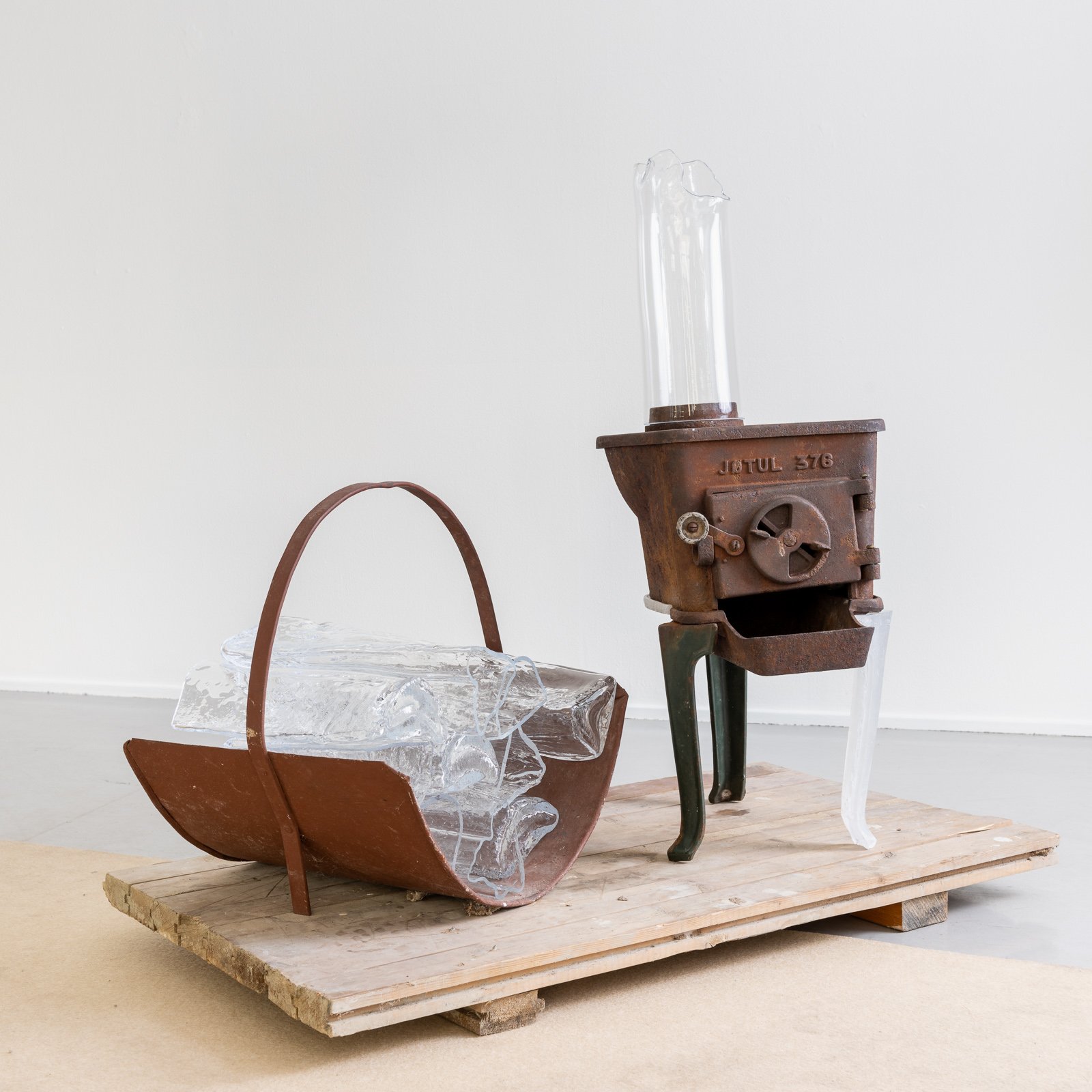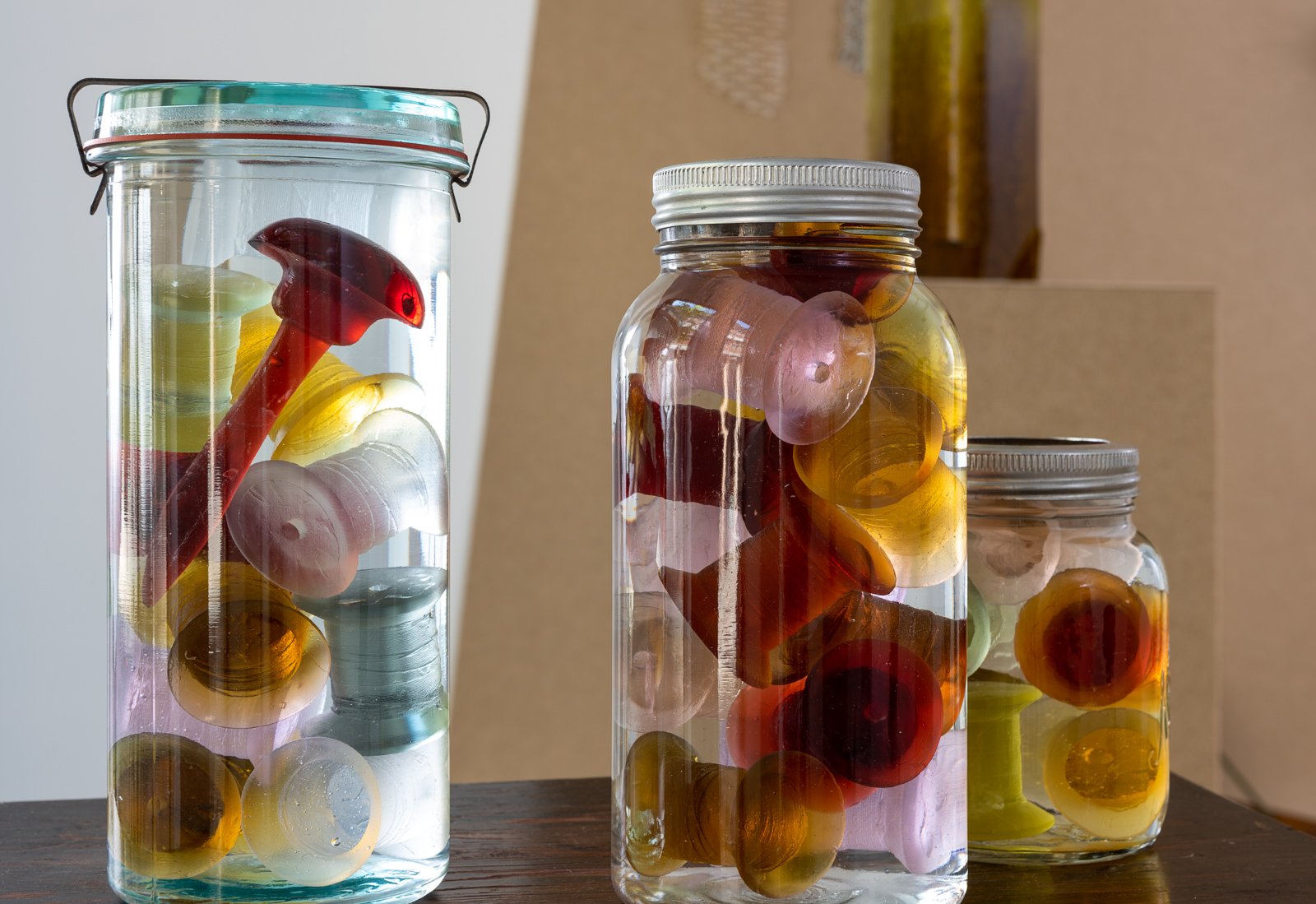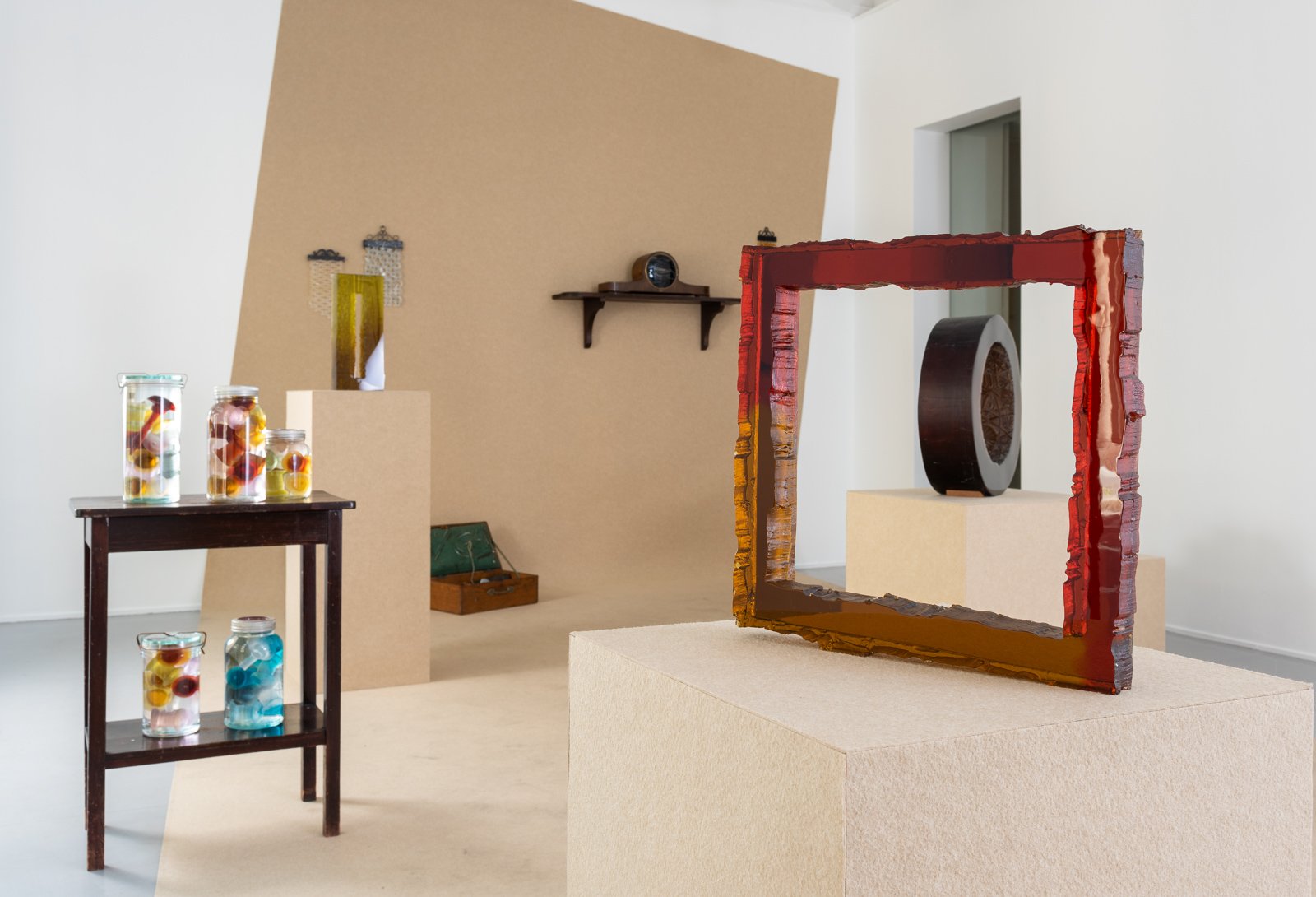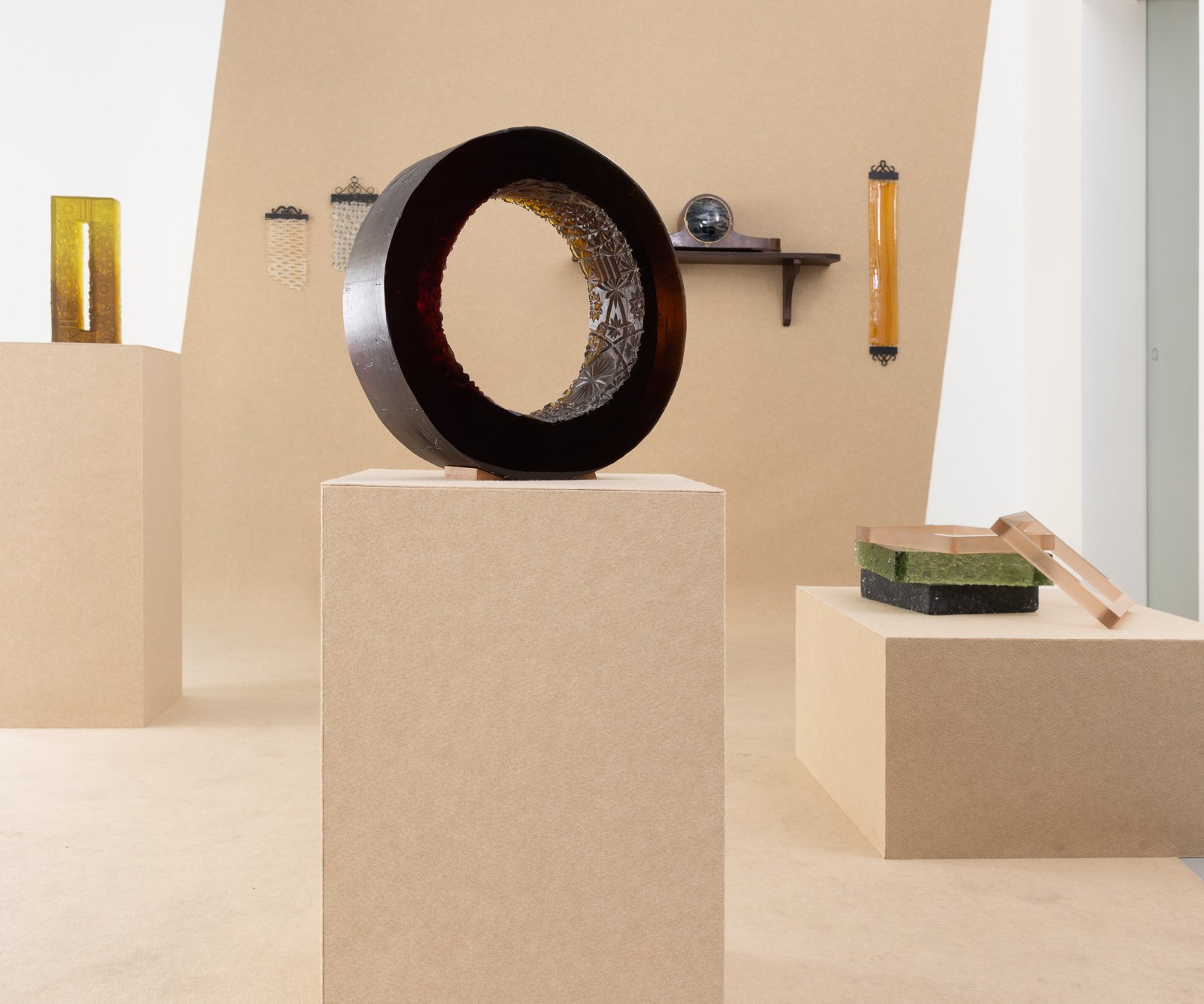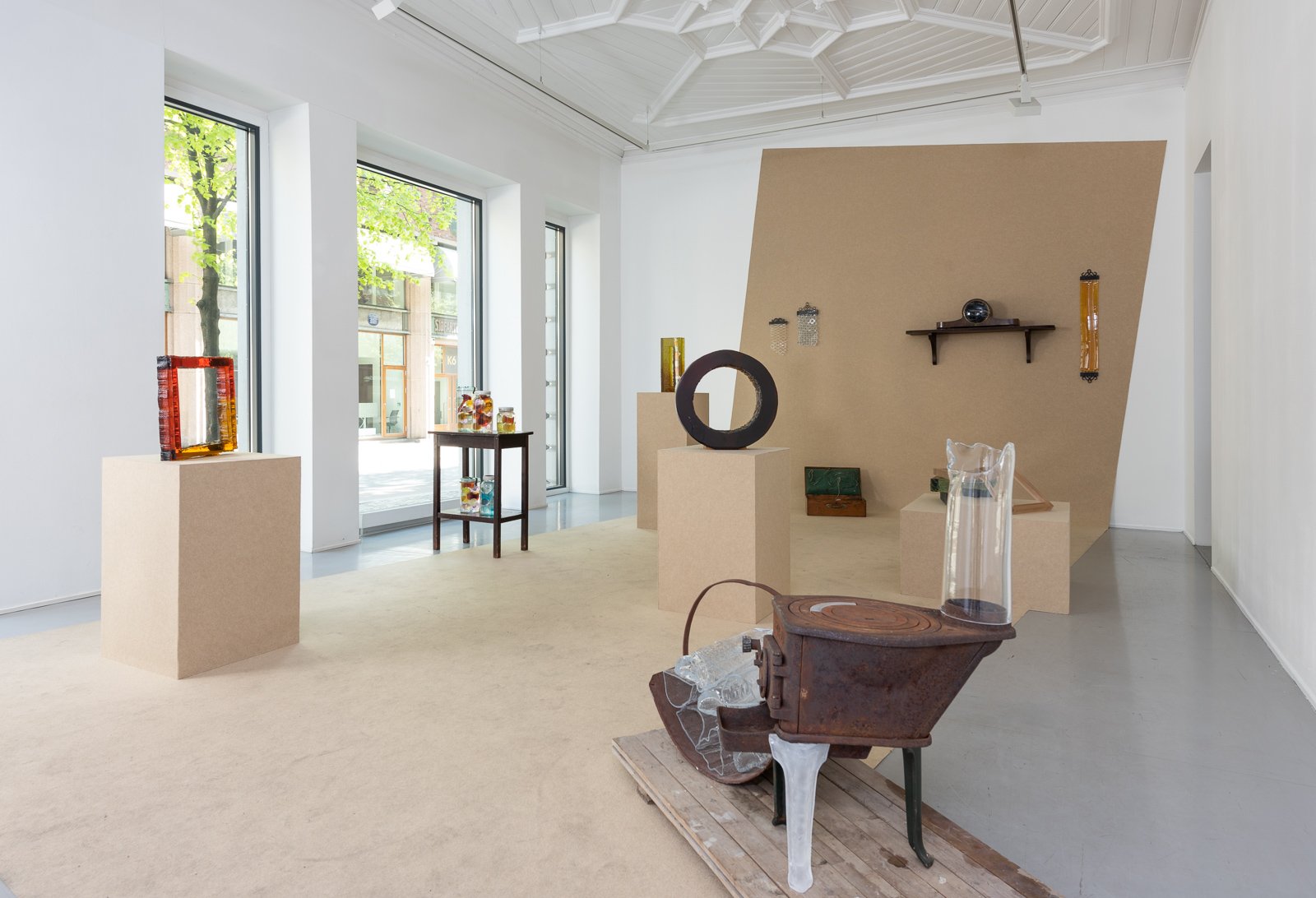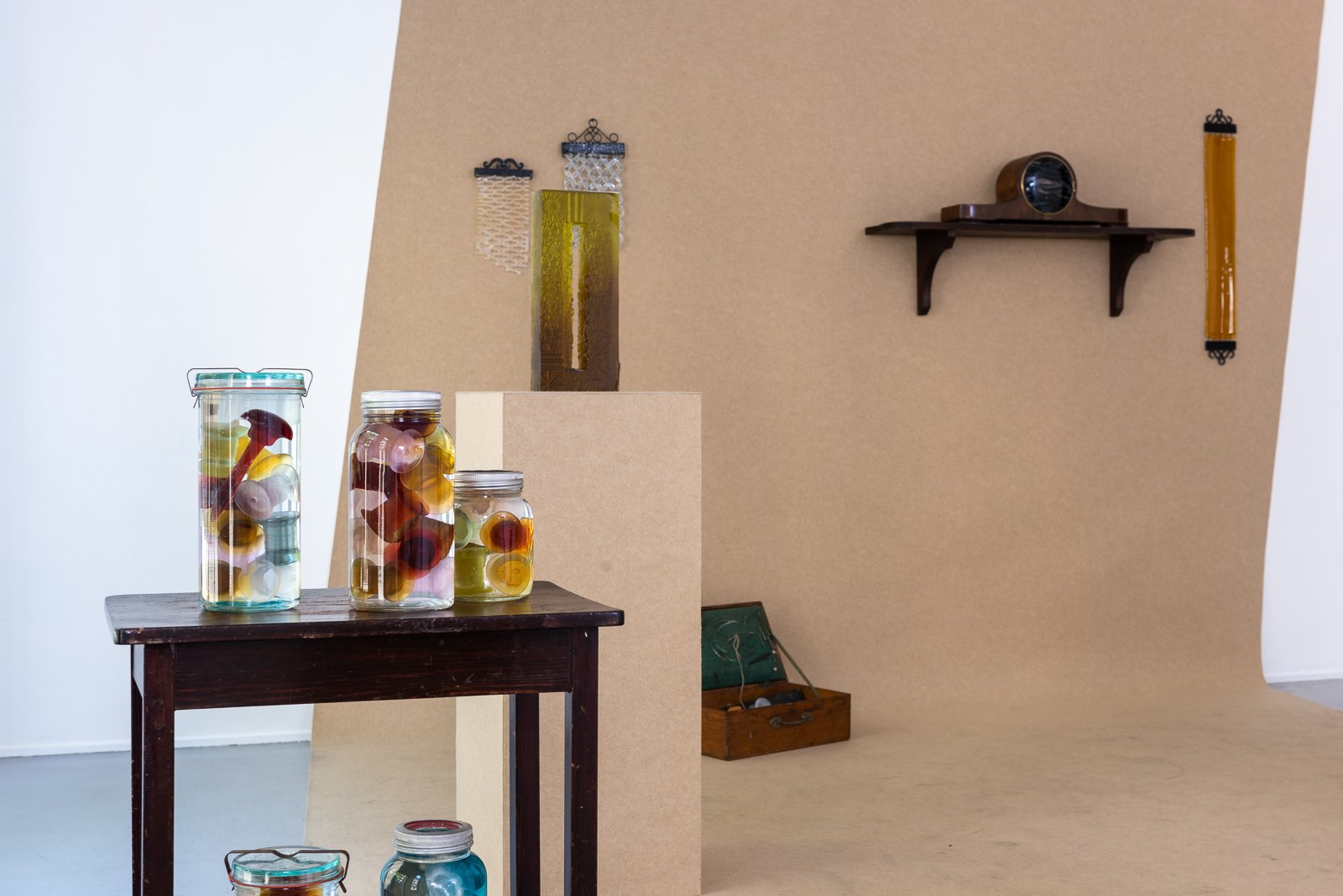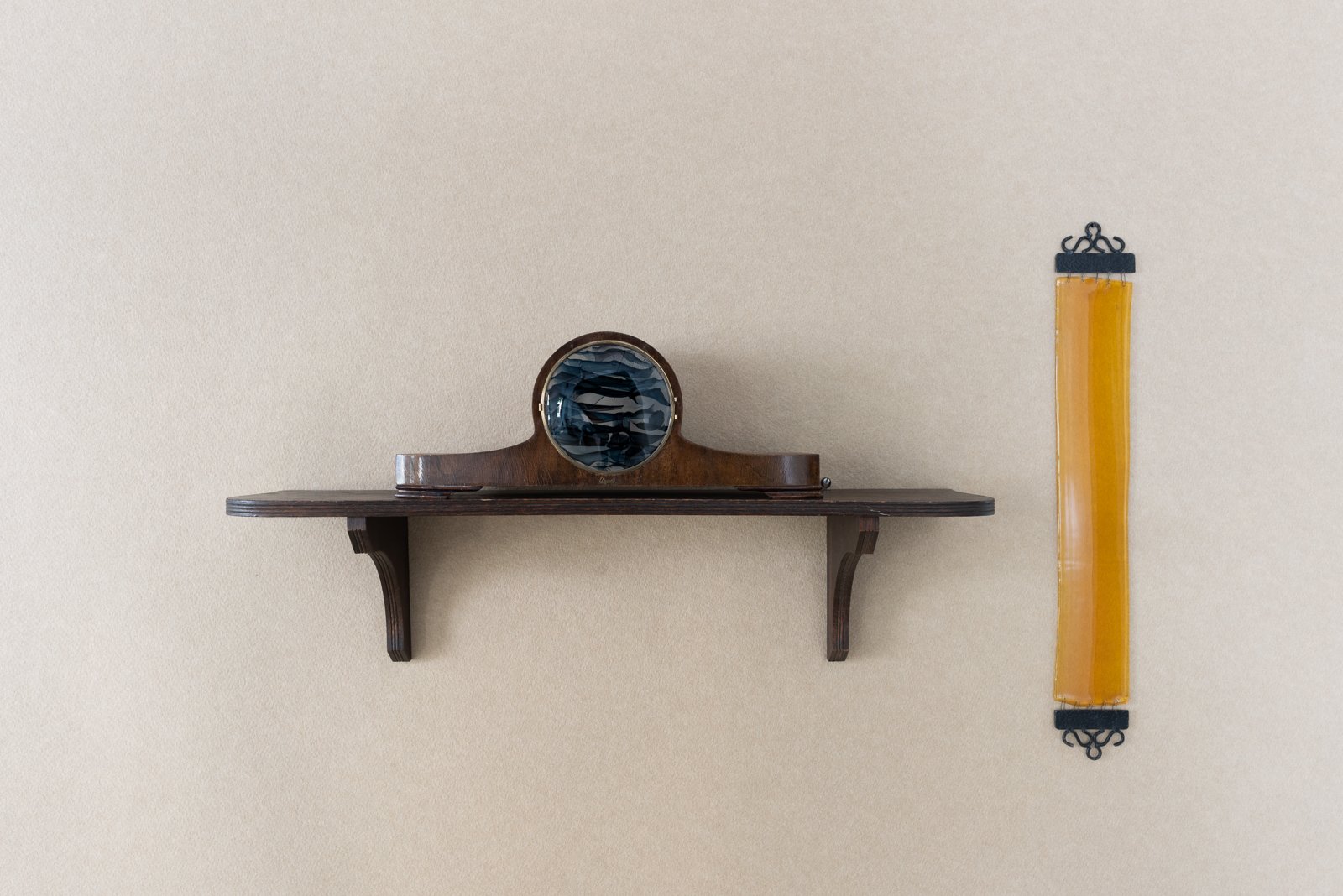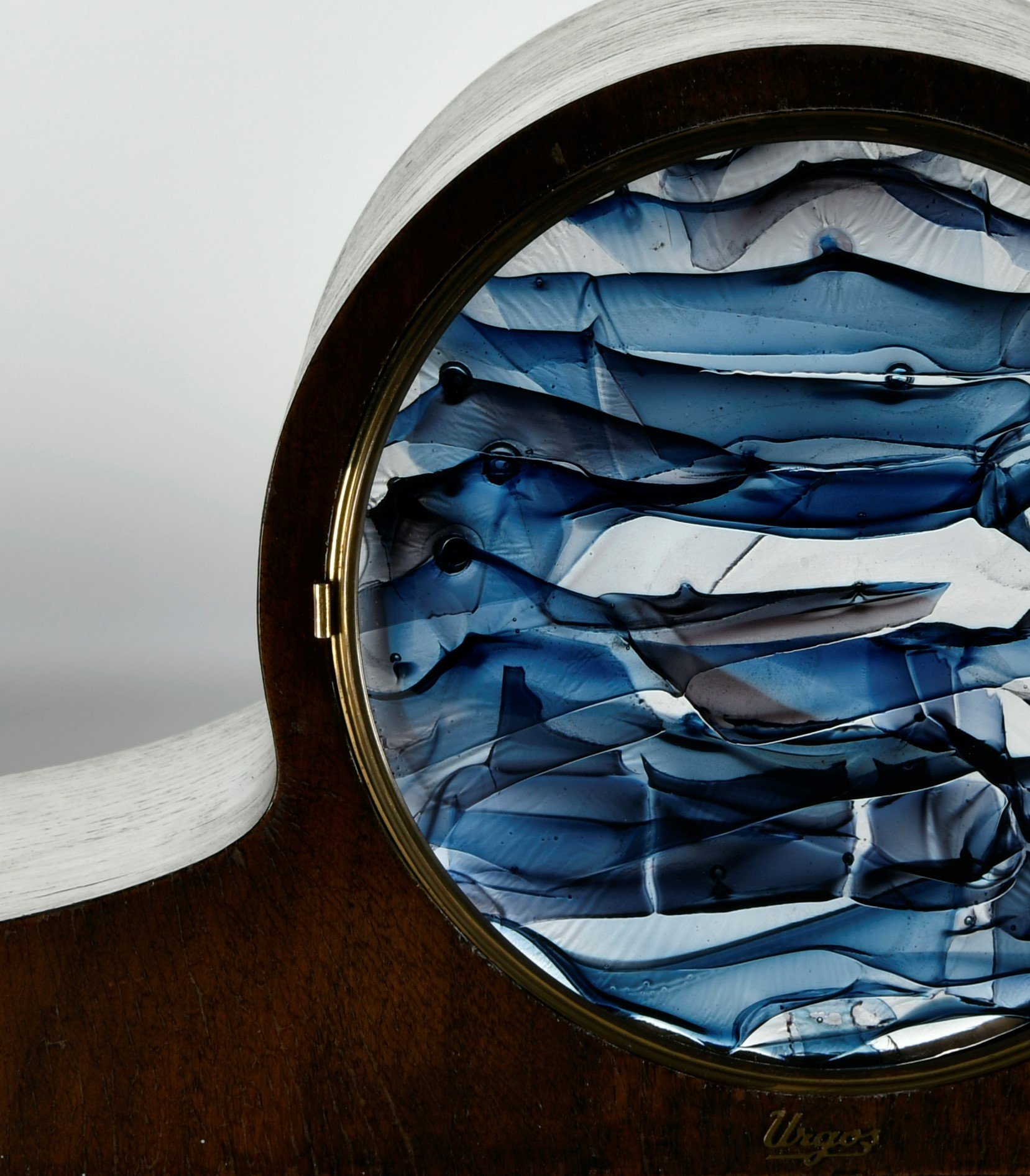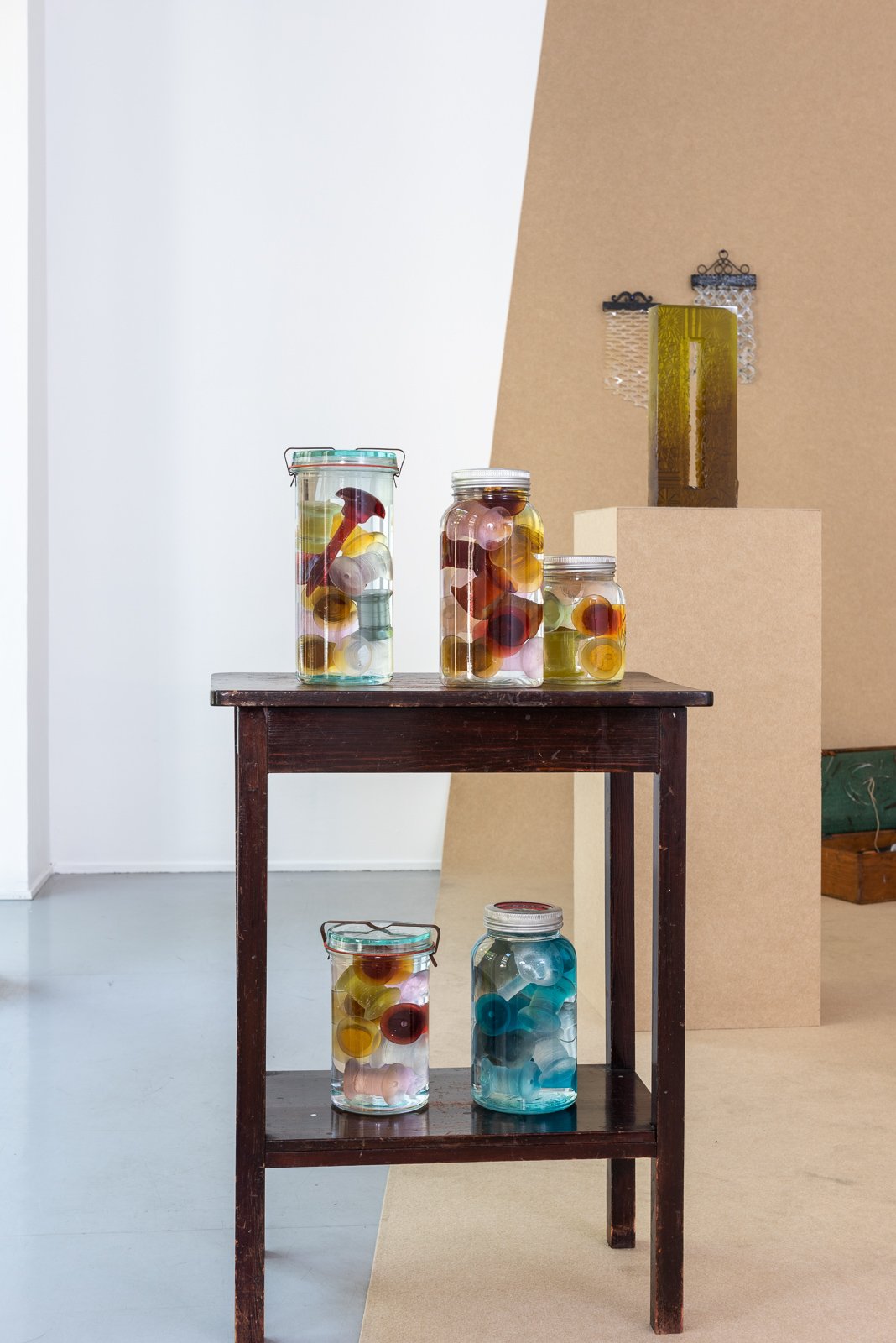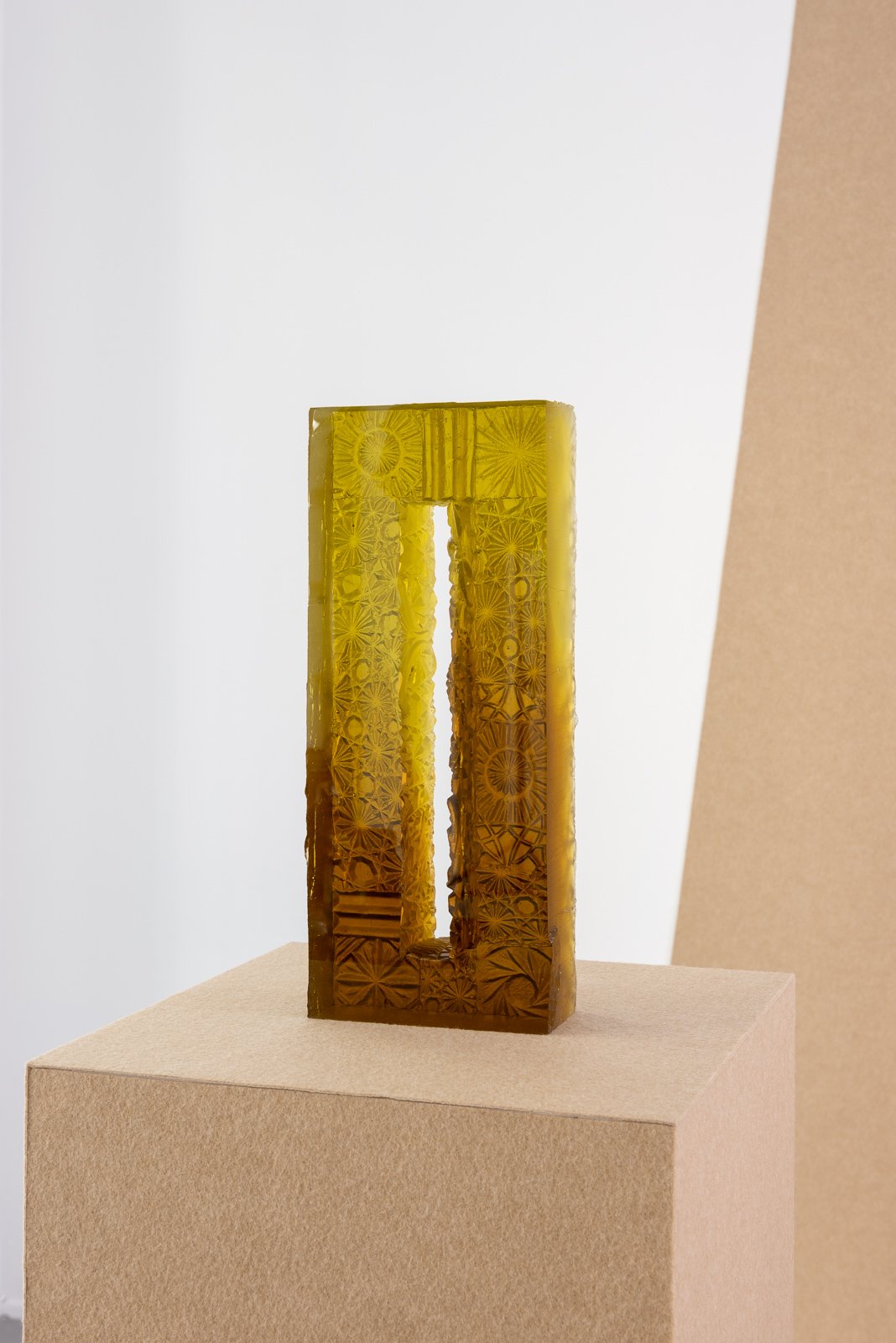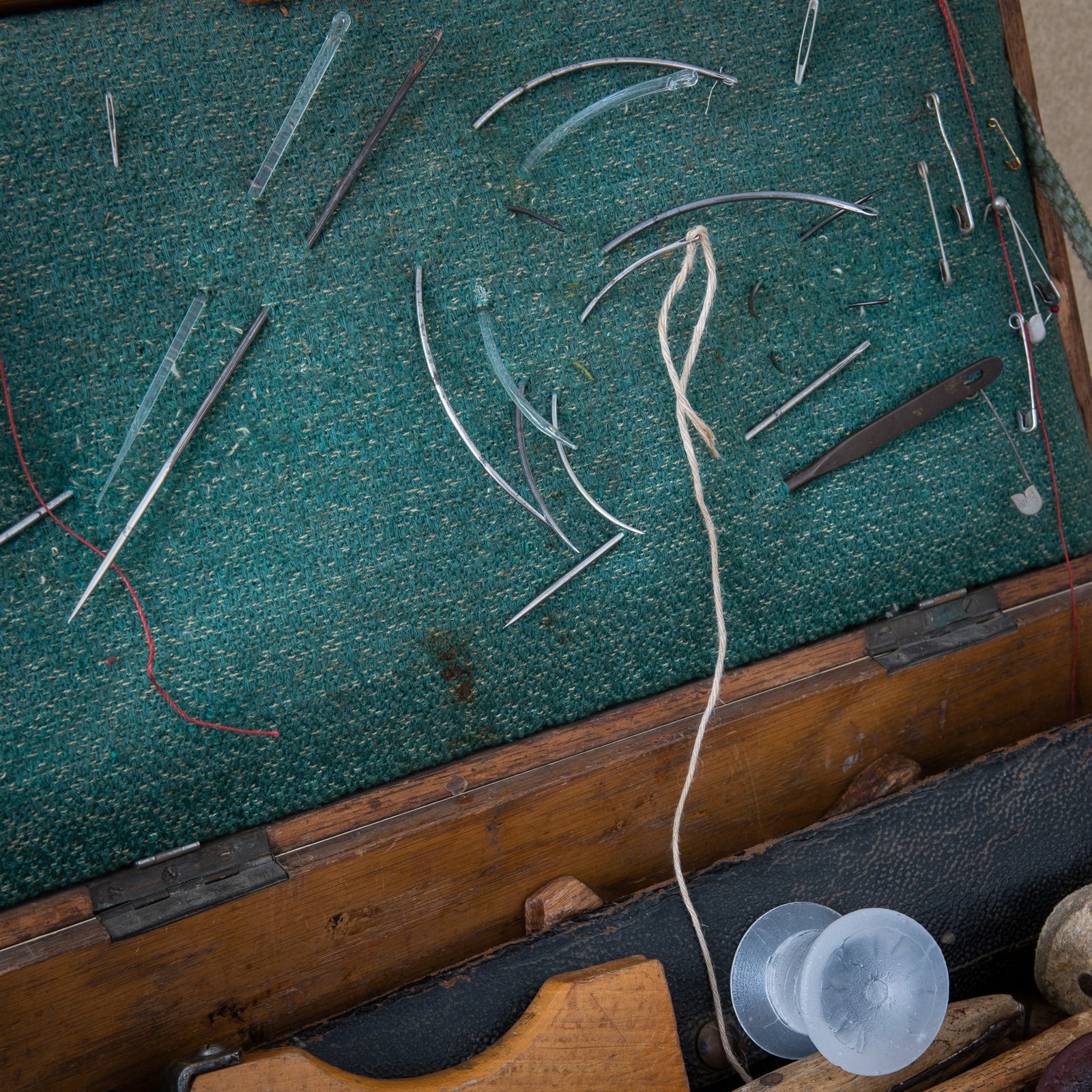Kari Håkonsen
Tell me who I am
5 May - 26 June 2022
How have we become who we are, as people, as artists? How much of us is held in place by stays anchored in the depths of the valley of childhood?
Father, mother, grandparents – they are all gone now, leaving behind their respective artefacts. Memories reside everywhere, in the old stove in the dilapidated cabin father built, the one where the loggers sought shelter during their breaks, in grandfather’s old upholsterer’s chest, in mother’s embroidered wall-hangings, and in the old canning jars. And in the background the ticking of the old clock continues.
We may not think all that much about the impact our people and their things have on us when we are in the midst of our grand, seemingly endless childhoods. As young adults, we are often elsewhere – both physically and mentally. But time does not pass, it runs away, like wild horses across the plains. We grow up and suddenly we are middle-aged. Those who were the adults become old, frail, they are going to die, they pass away. We become the eldest. And in the midst of our grief are all the things. They spill out of the closet, erupt out of the cellar, out of the earth, tumble down from the attic, are removed from the walls. Things – large, small, significant, insignificant, an abundance of things.
Where did these things come from? What stories do they hold? And what shall we do with them?
Things can also be distorted, or they can be twisted into something new, something else.
The vestiges of craftsmen and settlers are clear. Our forefathers and mothers worked with their hands, as the sun rose and set in the sky, and the wheat yellowed and swayed in the fields. Their things have now acquired a new life and form, while the clock continues ticking in the background. Old things and new artworks merge, as do the past, present and future, the major and the minor. Everything moves in cycles, everything is interconnected.
Ruth Lillegraven, Author
Kari Håkonsen (b. 1969) is educated in glass art at the Glass School in Orrefors, Sweden (1994) and The Surrey Institute of Art and Design (UK, 1998). She has been established as a glass artist since 1998 and today she runs the workshop Klart glass at Kirkenær in Hedmark together with Vidar Koksvik. They also run a glass studio and shop at Bærums verk in Akershus. Kari has held and participated in a large number of solo and group exhibitions at home and abroad and her work has been purchased by collections such as the National Museum, KODE, Nordenfjeldske and the Ministry of Foreign Affairs' art collection. Kari's art is characterized by an exploratory approach to the material, which ranges from solid glass with optical properties to the delicate glass stretched to the extreme of its limit. For this exhibition, Kari takes new paths both technically and thematically. Using glass castings, she has entered into a poetic dialogue with objects related to family, childhood and upbringing.
The exhibition is supported by Regional project funds for visual arts.

